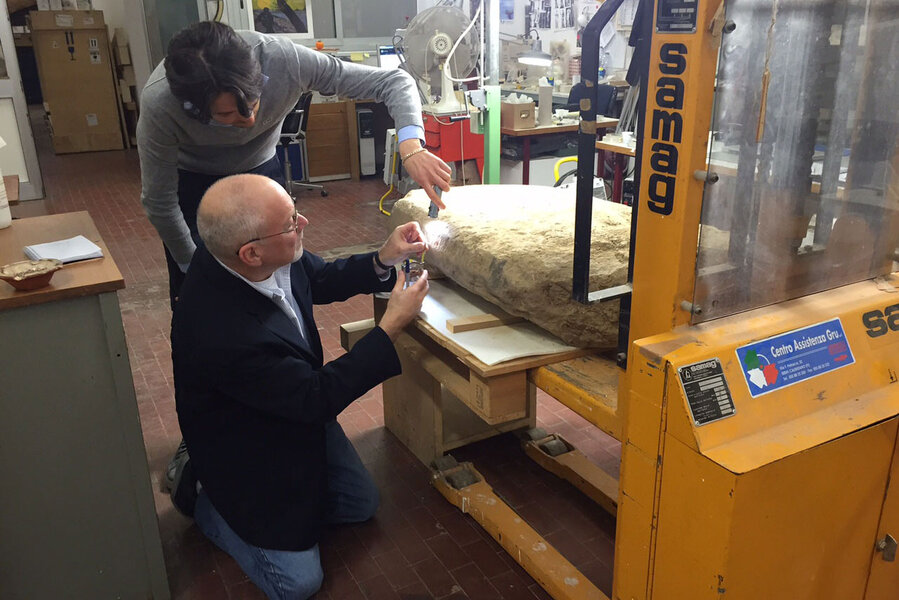2,500-year-old sandstone slab reveals clues about ancient Etruscan faith
A large sandstone slab dating back to the 6th century BC could hold clues about the religious beliefs of ancient Etruscans, if only archaeologists could read it.
Uncovered from an Etruscan temple in Tuscany after being buried for over 2,500 years, researchers believe the stone holds an important religious text. The 500-pound stele (the term that archaeologists use for such slabs) measures four feet tall by two feet wide and holds roughly 70 letters and punctuation marks.
Because of the rarity of Etruscan artifacts, not much is known about the Etruscan language. The little knowledge on the ancient language is limited to specific language written on funerary objects, which make up the majority of Etruscan discoveries. In translating the large stele, archaeologists will establish a broader understanding of Etruscan letters and words.
“We hope to make inroads into the Etruscan language,” archaeologist Gregory Warden, co-director and principle investigator of the Mugello Valley Archaeological Project and professor at Franklin University Switzerland, said in a press release. “Long inscriptions are rare, especially one this long, so there will be new words that we have never seen before, since it is not a funerary text.”
Archaeologists also say the artifact’s language could tell them more about Etruscan religion, and in turn more about the Romans, who were influenced by the Etruscan way of life.
“This is probably going to be a sacred text, and will be remarkable for telling us about the early belief system of a lost culture that is fundamental to western traditions,” added Dr. Warden.
“Inscriptions of more than a few words, on permanent materials, are rare for the Etruscans, who tended to use perishable media like linen cloth books or wax tablets,” added Etruscan scholar Jean MacIntosh Turfa with the University of Pennsylvania Museum, Philadelphia. “This stone stele is evidence of a permanent religious cult with monumental dedications, at least as early as the Late Archaic Period, from about 525 to 480 BCE.”
The stone slab is not only evidence of a permanent Etruscan religion, but it could also give some insight into the religion itself.
“We know how Etruscan grammar works, what’s a verb, what’s an object, some of the words,” says Warden in the release. “But we hope this will reveal the name of the god or goddess that is worshiped at this site.”
The majority of Etruscan artifacts have been recovered from grave sites, allowing archaeologists to understand a great deal about how Etruscans handled death but not much else.
“So any text, especially a longer one, is an exciting addition to our knowledge,” archaeologist Ingrid Edlund-Berry, a professor at The University of Texas at Austin, said in the release. “It is very interesting that the stele was found within the walls of the buildings at the site, thus suggesting that it was re-used, and that it represents an early phase at the site.”
And not only are past artifacts difficult for archeologists to decode, but they are also extremely rare. The University of Pennsylvania Museum of Archeology and Anthropology’s Etruscan collection is “among the finest in the United States,” encompassing the full range of the Etruscan civilization from 8th century BC to 1st century BC. Yet the Penn Museum has less than ten examples of the Etruscan language.
“Six rare Etruscan inscriptions are on display in this gallery, with an explanation of the importance of the Etruscan language for understanding who these people were and where they came from,” explains the museum’s website.
While historians and archaeologists are interested in the Etruscan civilization for its own merit, they also focus on Etruscans to better understand their successors, the Romans.
Explains Southern Methodist University’s press release: “The Etruscan civilization once ruled Rome and influenced Romans on everything from religion to government to art to architecture.”







